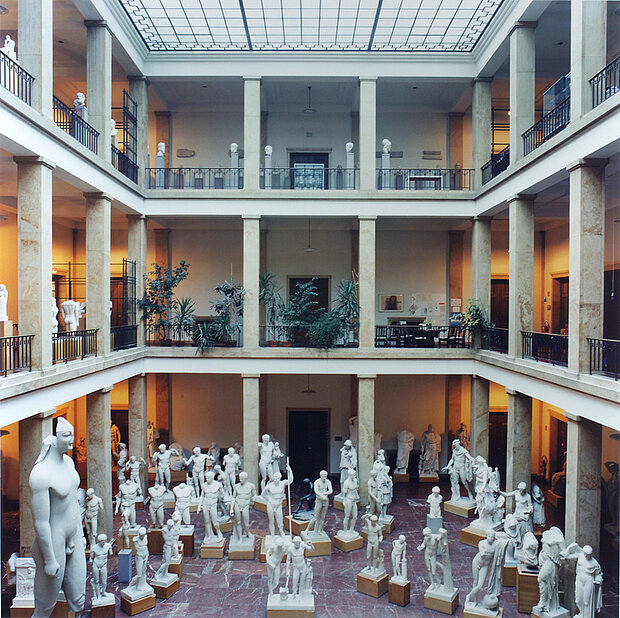
Höfer, Candida
Zentralinstitut für Kunstgeschichte München IV
2002

© mumok
| Object description | Color photograph |
|---|---|
| Dimensions |
Objektmaß:
height: 152 cm,
width: 152 cm
Rahmenmaß:
height: 154,7 cm,
width: 154,7 cm,
depth: 4 cm
|
| Year of acquisition | 2004 |
| Inventory number | G 1000/0 |
| Creditline | mumok - Museum moderner Kunst Stiftung Ludwig Wien, erworben mit Unterstützung der Gesellschaft der Freunde der bildenden Künste |
| Rights reference | Bildrecht, Wien |
| Further information about the person | Höfer, Candida [GND] |
| Literature |
Why picture now/Fotografie, Film, Video, heute Vergessen. Fragmente der Erinnerung Hyper Real |
„Central Institute for Art History Munich IV “ is part of a typological series of pictures begun by Candida Höfer in the 1970s. They present views of institutional interior spaces both in order to document and to reflect on the cultural and social framework within which official representation occurs. Höfer, who for some years was a student of Bernd Becher, never approaches her subjects with a view of commenting on them. Her interest is in existing spaces, which she approaches with a photographer’s eye, directing the gaze to the basic parameters that determine our perception of space: light, perspective, point of view, furniture and the relation between the various objects and motifs. What is perhaps most striking about her take on the Central Institute for Art History is the rigid geometrical order informing the picture. The colonnades, whose geometry finds an echo in the design of the ceiling, the light sources and the classical sculptures on display all combine to give the entire pictorial space a rhythmic structure. The central perspective of the photograph is rather untypical of Höfer’s work, where the camera’s angle is normally much more oblique so that the viewer enters the institutional space through the side-door, as it were. However, despite this decision in favour of central perspective, there remains something deeply ambiguous about the photograph which is at odds with the setting’s representative character. Höfer’s pictures of museums, universities, libraries and zoos document aspects of our collective cultural and social memory.
© mumok – museum moderner kunst stiftung ludwig wien